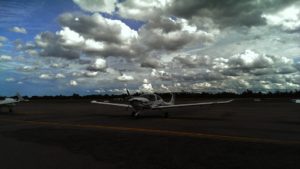 Ever wonder why the weather is always reported from the airport?
Ever wonder why the weather is always reported from the airport?
You will hear it on TV,”Currently it is 75 degrees at the airport with a light west wind.” Nobody lives there yet that is where you receive your current weather information, in fact whenever you do a simple search of current weather if you read the fine print you might find that it is simply the report from the closest airport to you. Look at a national weather map with observations from Washington State to Washington DC and it is likely that all of those temperatures were recorded officially at the airport designated for that city. So why do all of the official weather sites (Automated Surface Observation Systems ASOS) end up at the airports?
Money and safety can go a long way when installing weather stations. Safety is the name of the game when it comes to aviation, specifically airplane takeoffs and landings. Of course there is the wind factor but also the International Standard Atmosphere, or a variation of pressure, temperature, air density within the Earth’s atmosphere. These all need to be monitored closely to ensure the safety of all things airborne. Due to this high standard the Federal Aviation Administration mandates that weather observations must be taken at large airports, and it uses federal dollars to get this done. Go to any airport that can handle a good amount of air traffic and you will see the row of weather instruments off to the side taking temperature, visibility, humidity, wind speed and direction, plus a number of other weather observations important to air travel and everyday life. They will all look pretty much the same with a set standard (height, instrument housing, etc) for each weather observation.
But if nobody lives there why is my weather reported from there? Well the fact that nobody lives there and will likely not be living there is a good thing for a weather observation. A large open area with grass (aside from the runway and tarmac) is a perfect place to record the weather. In fact a wind measurement is generally not excepted unless any obstructions are at a distance of 10 times the height from the instrument. That means a 20 foot tree or building should be at least 200 feet away from the anemometer for the observation to be considered valid. You will not (now and likely forever) find areas like this near major cities anywhere but the airport.
So next time your near an airport (in a plane or not) try to spot the ASOS for that city. They are everywhere at all types of airports.